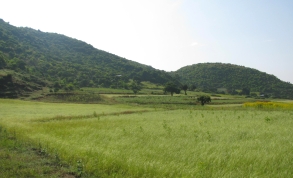Related Content

Food security
Exclosures and communal grazing lands in Ethiopia

Food security
Restoring and safeguarding degraded land is an important means of enhancing ecosystem services and biodiversity, with cascading socio-economic and human-wellbeing benefits. In Cambridgeshire, United Kingdom, the Wicken Fen Vision project aims to convert a drained and intensely farmed arable land into a functioning wetland to restore ecosystem services and provide new habitats for wildlife. The initiative currently covers around 770ha and is led by the National Trust, a charity and member organisation for heritage conservation in England, Wales, and Northern Ireland. This study used the Toolkit for Ecosystem Service Site-based Assessment (TESSA) to evaluate the ecological benefits and monetary values of ecosystem services provided by the 479ha restored wetland mosaic in comparison to the former arable land. Overall results suggest that restoration of the 479ha is associated with a net gain to society as a whole of US$ 199 per hectare per year, for a one-off investment in restoration costing US$ 2,320 per hectare.
Agricultural lands can become degraded due to a range of factors, including erosion, organic matter loss, salinisation, acidification, or drainage from crop production. Degradation of lands can emit greenhouse gases but through restoration of lands these emissions can be reduced by reclaiming productivity of the soils (UN Climate Technology Centre & Network) [CTCN], n.d.).
Peaty soils, for example, store large quantities of carbon because of the anaerobic decomposition of the organic matter. In order to use these soils for agricultural use, the soils are drained, which adds oxygen to the soils and favours aerobic decomposition, which in turn emits large fluxes of CO2 and N2O. Emissions from drained organic soils can be partially reduced through restoring practices, such as maintaining a shallow water table or avoiding deep ploughing (Smith et al., 2007).
The Wicken Fen Vision project in Cambridgeshire, United Kingdom, aims to convert drained, intensively farmed peat soils into restored wetland to enhance the provision of ecosystem services. The initiative covers around 770ha, out of which 170ha are Wicken Fen National Nature Reserve (NNR), and is carried out by the National Trust, a charity and member organisation for heritage conservation in England, Wales, and Northern Ireland. Despite the small size, Wicken Fen NNR is home to over 8,000 species and some of the rare species fear extinction. It is one of four areas in the fenland basin that were not drained for arable production and are left of the original undrained fen wetland. The National Trust purchased some of the adjacent farmland in 1993 and has since been converting the adjacent farmland into a mosaic of wetlands to restore biodiversity, create new habitats for wildlife and reduce rates of soil organic carbon loss.
This study evaluated the changes in the ecosystem service provision as a result from this land conversion for 479ha of restored wetland mosaic. The biophysical and monetary values of ecosystem services provided by the restored wetland mosaic compared with the former arable land were assessed.
The arable land emits around 2,323 tonnes CO2 equivalent (eq) and the 479ha of restored wetland had an estimated annual global warming potential of 809 tonnes CO2 eq. In terms of monetary benefits, the restored wetland provides an annual reduction of greenhouse gas emissions worth an estimated US$ 72 per ha. The net monetary gains from restoration of the 479ha of land amounts to US$ 95,487 per year.
These benefits stem from gains in nature-based recreation through the direct expenditure by visitors to the restored wetland (US$ 671 per ha/per year), monetary benefits from grazing through commercially priced agreements with local farmers (US$ 120 per ha/per year), and flood protection (US$ 48 per ha/per year). There was, however, also a substantial net loss of arable land for crop production which was estimated as US$ 2,037 per ha/per year. Moreover, the management costs declined by US$ 1,325 per ha/year.
The example of the Wicken Fen Vision project in Cambridgeshire, United Kingdom, demonstrated the benefits of converting drained arable land into restored wetland. Converting drained peat soils into wetland increased the ecosystem services and provided large monetary benefits.
Peatlands are especially important for land management as they can store large amounts of carbon due to their thick layers of peat. Even though peatlands only cover around 3% of the land surface, they are able to store more carbon than the vegetation of all the world's forests combined (Peat Portal Assessment, 2008; CTCN, n.d.). Converting arable peatlands into wetlands, therefore, provides a huge opportunity to restore biodiversity and ecosystem services.
Restoring drained arable land provides wide environmental and societal benefits through reduced greenhouse gas emissions, however, this conversion also results in a loss of arable land and production for local farmers who rely on income from arable land and may therefore not support the conversion. Lack of provision of viable sources of income may disincentivise the restoration. This mismatch between the benefits of arable land for a small number of farmers compared to the wider societal benefits of restored land is reflected in the political ambivalence surrounding this topic. Better engagement with local farmers and the provision of alternative income sources for farmers can improve this conversation (Peh, 2014).